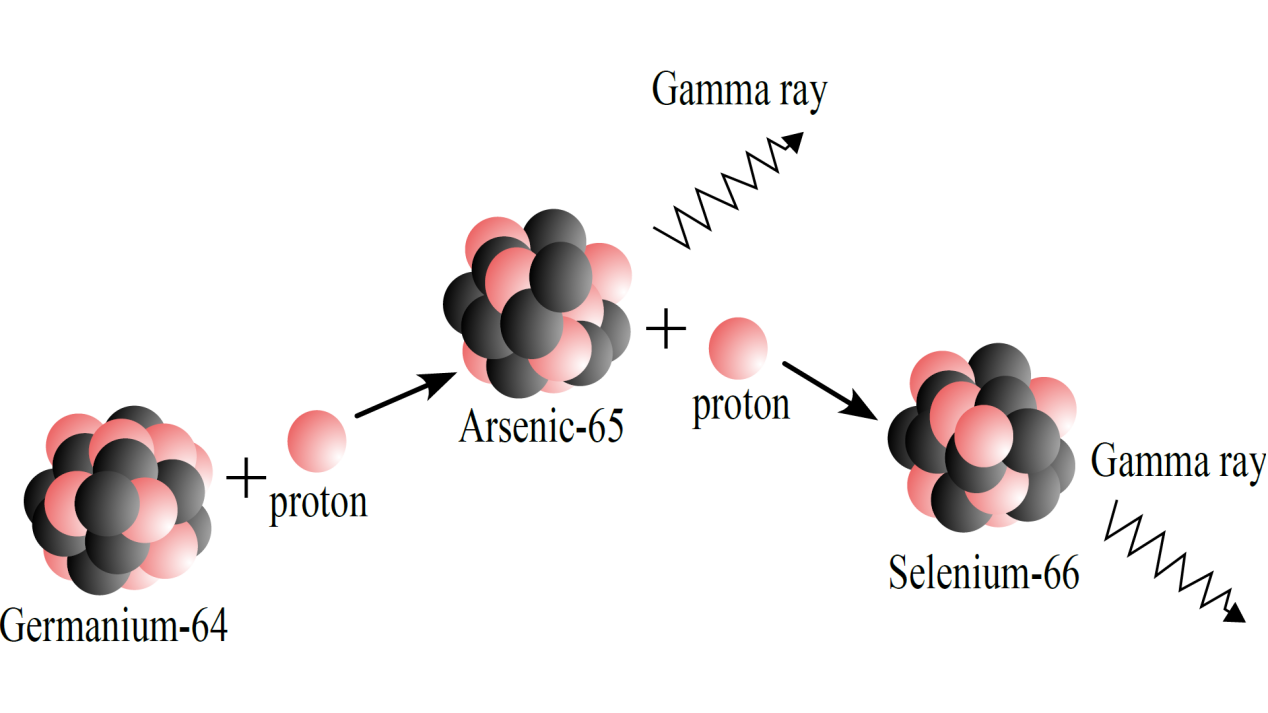
A research team at the Institute of Modern Physics (IMP) of the Chinese Academy of Sciences (CAS), together with international collaborators at Monash University and the Joint-Institute for Nuclear Astrophysics, has computed a significantly revised proton capture reaction rate of arsenic-65 for the extreme astrophysical environments of accreting neutron stars, permitting astrophysicists to probe the mechanism of periodic thermonuclear X-ray bursts. This study has been published in The Astrophysical Journal.
An extreme astrophysical environment exists at the extremely dense envelope of a neutron star that accretes stellar fuel from a companion star. Such an envelope can be up to about 6,600 times the density of the core of the sun, and 130 times its temperature. Under such extreme conditions, thermonuclear runaway can occur. Light nuclei are fused into heavier nuclei and then heavier nuclei capture additional protons and alpha particles. This nuclear blast releases vast amounts of energy.
A burst of high-energy X-rays is emitted from the surface shortly after the thermonuclear runaway. This can be observed in the form of the so-called Type-I X-ray bursts. As accretion continues, such thermonuclear bursts can recur periodically. One most famous example is the periodic X-ray burster named GS 1826-24.
During the thermonuclear runaway, arsenic-65 and selenium-66 isotopes are synthesized by subsequent proton capture on germanium-64. In this study, the researchers have reassessed the reaction rate of the proton capture on the arsenic-65 isotope for conditions corresponding to the extremely high temperature environment of Type I X-ray bursts. They used a new and more precise proton threshold for arsenic-65, which was deduced from the relativistic Hartree-Bogoliubov theory with density-dependent meson-nucleon coupling interaction.
This new reaction rate alters the nucleosynthesis path and the speed at which thermonuclear burning can occur. In turn, this affects the brightness and time variation of Type I X-ray bursts, in particular the late-time that is dominated by nuclear reactions on heavy nuclei. It also results in changes to the burst "ashes", nuclei synthesized by the X-ray bursts. This updated, more accurate reaction rate allows to refine and deepen the understanding of the hydrodynamics of the periodic Type I X-ray bursts.
Moreover, these results critically impact the deduced neutron star mass-radius relation, which, in turn, places constraints on the high-density nuclear equation of state. The new neutron-star mass radius relation of GS 1826-24 indicates that its neutron star mass and radius could be in the same range as the PSR J1903+0327 pulsar. Information about the properties of the neutron stars impacts the use of these properties in the gravitational wave astronomy.






